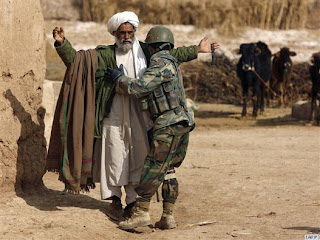
Elk in Kentucky used to be an oxymoron. These majestic animals have been foreign to the Appalachian landscape for close to 150 years. Like the buffalo, most elk in eastern states were hunted without restrictions in early America.
These antlered brutes have made a resurgence lately in the Bluegrass State due to an unlikely savior.
The Rocky Mountain Elk Foundation, whose members consist of avid hunters and outdoor enthusiasts, has taken a conflicting role with the dee r like creatures; they are a giver and a taker, both a messiah and a destroyer.
r like creatures; they are a giver and a taker, both a messiah and a destroyer.
The RMEF's purpose is to reintroduce elk to habitats where they once flourished. The organization has conservation operations nationwide and is primarily funded through private donors.
Of course the RMEF members have ulterior motives for financing the transplantation of western elk to the more curvaceous terrain of the Appalachians. Ironically, the RMEF is acting as a nature conservationist to ultimately prey on the animals they desire to save.
Elk are very similar in appearance to deer, especially to those unfamiliar with these robust animals. The biggest differences are that elk typically weight 200 to 400 more pounds than deer.
Elk also have their distinct, protrusive antlers that transfix their heads, almost chandelier like. Elk are also differently colored, having both black legs and neck.
The RMEF picks their specimens primarily from these five westward states: Utah, New Mexico, Arizona, North Dakota, and Kansas.
"You don't think of elk in Kansas, but there were some small herd elk brought out from there," said Taylor Orr, RMEF member and affiliate of the Kentucky Fish and Wildlife Commission.
The reintroduction of elk is still in its early stages in Kentucky. The process began in 1997, when seven elk from  Kansas were set free in their new Ohio Valley habitat. Kentucky's elk population could exceed 11,000 this year, according to the Roanoke Times.
Kansas were set free in their new Ohio Valley habitat. Kentucky's elk population could exceed 11,000 this year, according to the Roanoke Times.
Hunting at this point has been limited to lucky few who have been engaged with the foundation and were fortunate enough to be picked in a lottery draw.
"Last year we issued a thousand lottery draw elk tags to hunt. There were 250 bulls and 750 cows [capable of being hunted]. As the herds grown, we've increased the elk tags. Elk tags are important to stabilize the herd," Orr said. Over 40,000 Kentuckians applied for elk tags, only 1,000 were chosen.
Knott County has witnessed the greatest elk presence out of any other Kentucky area. "For some reason, the elk seem to congregate there," Orr said. This revelation has been primarily determined through the use of GPS and radio tracking devices.
Poaching is a subject with a certain stigmatization for wildlife groups. "We're not really supposed to talk about it, but it does go on," Orr said. A major reason for this illegal practice could be because the penalties for poaching aren't rigid enough.
"The penalties include paying a $1,500 replacement fee and [also] fines of somewhere around $1,000," Orr said. Basically a poacher is merely negating the transportation costs with the fines they pay; stocking an elk runs around $2,500 per animal. It seems the punishment for this infraction against nature is a small slap on the wrist.
Some think that sport hunting, let alone poaching, is less than noble. The Humane Society of the United States and People for the Ethical Treatment of Animals are two groups who are at odds with the RMEF, and hunters everywhere for that matter.
PETA claims that sport hunting is cruel and unnecessary. S
"There is no such thing as subsistence hunting anymore. Less than 2 percent of all hunters in the U.S. can be proven to be subsistence hunters. NRA statistics show that the average cost per pound of meat from big game animals runs in excess of $25," said Luke A. Dommer, President of the Committee to Abolish Sport Hunting, Inc., in a 1990 interview from the Idahonian Daily News.
To these anti-hunting groups, foundations such as the RMEF fuel a money-generating engine with blood. By having "wildlife" groups that increase animal's numbers, money is made from excess donations. Not only that, but state governments benefit through the sale of hunting licenses.
"I have no respect for the large multi-million dollar so-called wildlife organizations," Dommer said. This is an overall consensus among several anti-sport hunting groups.
The pain and suffering of the animals also provides a rationale for these groups anti-hunting positions.
"Our goals is to get sport hunting in the same category as cock fighting and dog fighting," said Wayne Pacelle, as quoted in the Bozeman Daily Chronicle, October 8, 1991
The RMEF would counter these anti-sport hunting groups with the idea that hunting keeps population's levels in check. "As with all hunting, it really provides a chance for herd animal levels to not overpopulate and burn through food resources. It also helps farmers whose crops are targeted by the animals," said Orr on the benefits of hunting.
Animal rights organizations would counter and say there are more humane methods for population control, such as strategic sterilization of herd members.
Regardless of the perspectives, each group identifies good points for their respective sides; and, game hunting will be an issue that is debated for some time.






